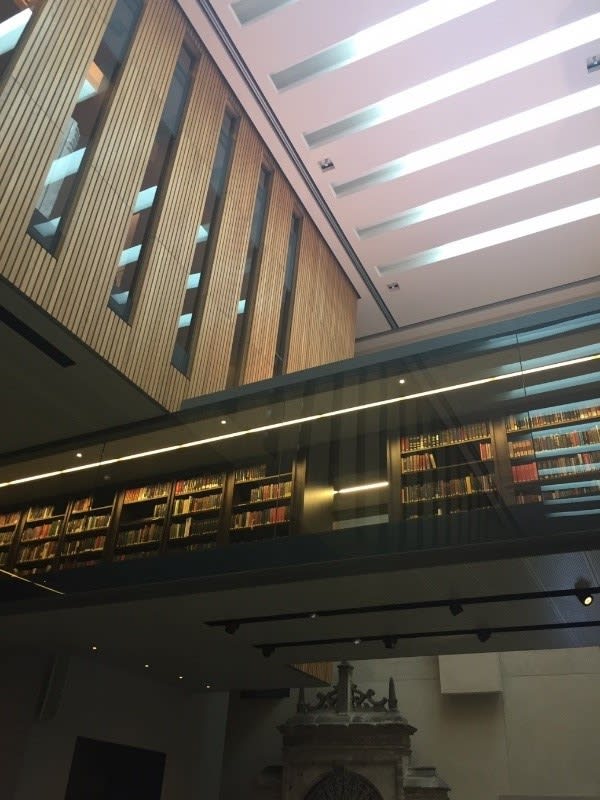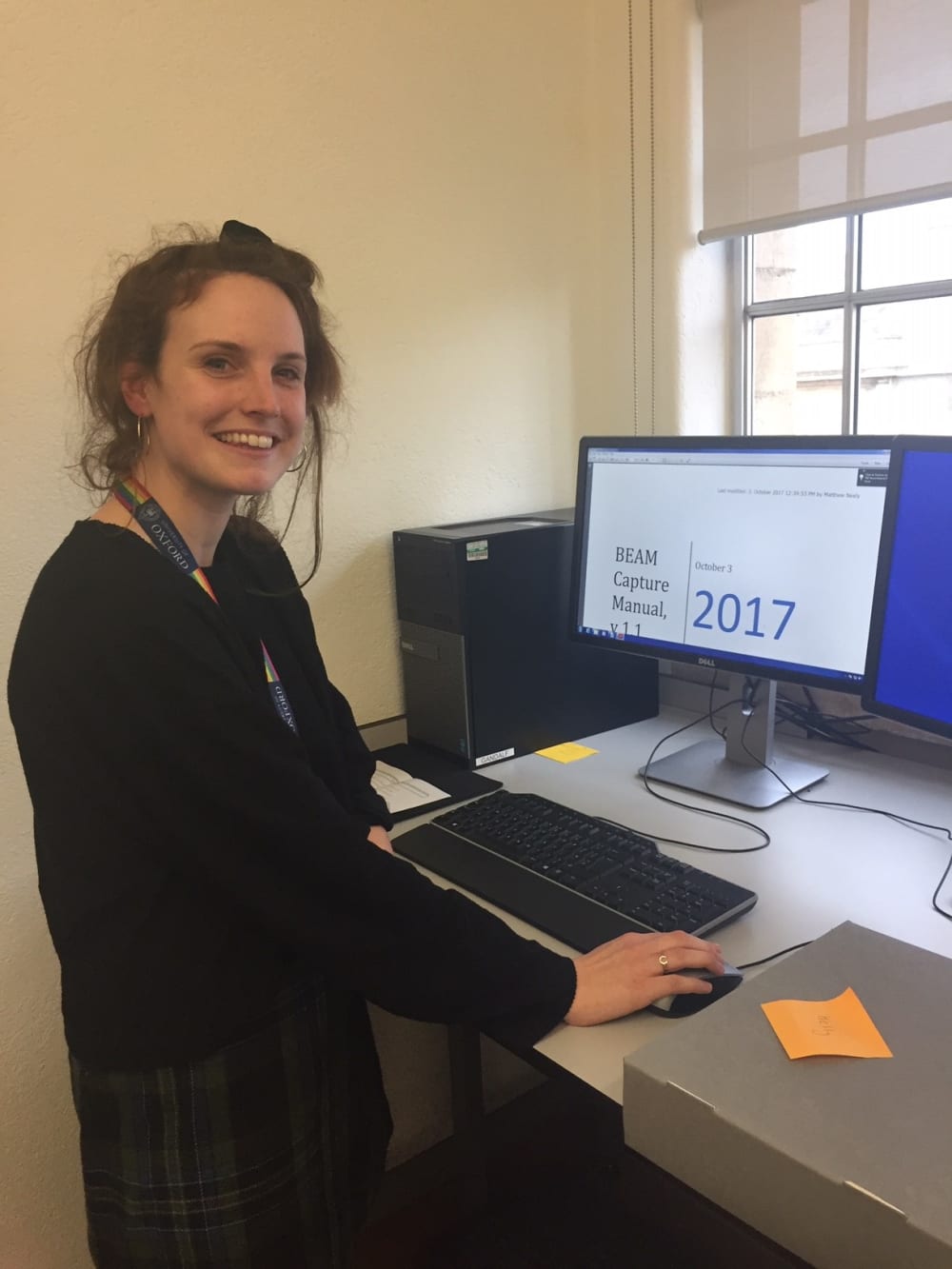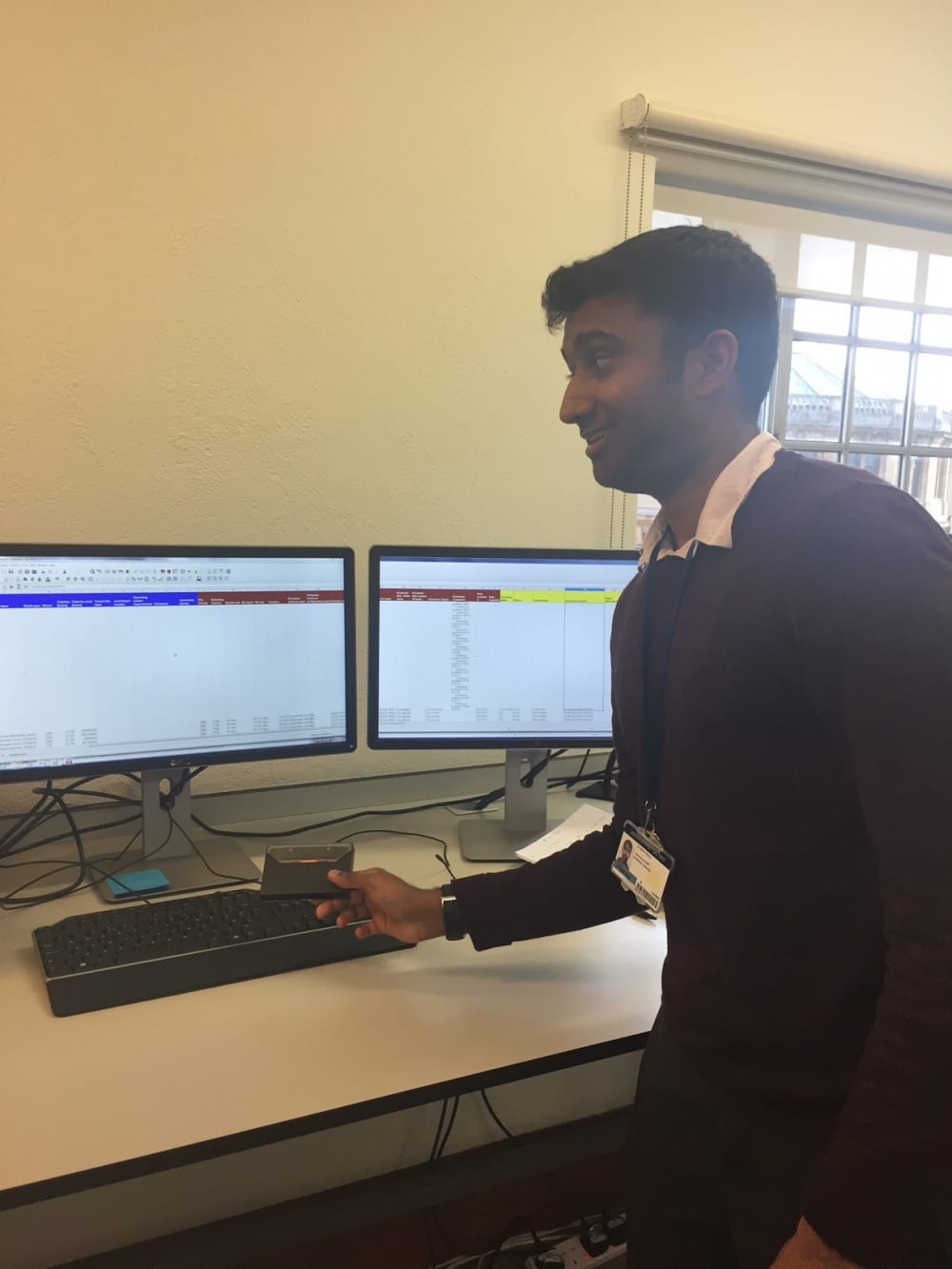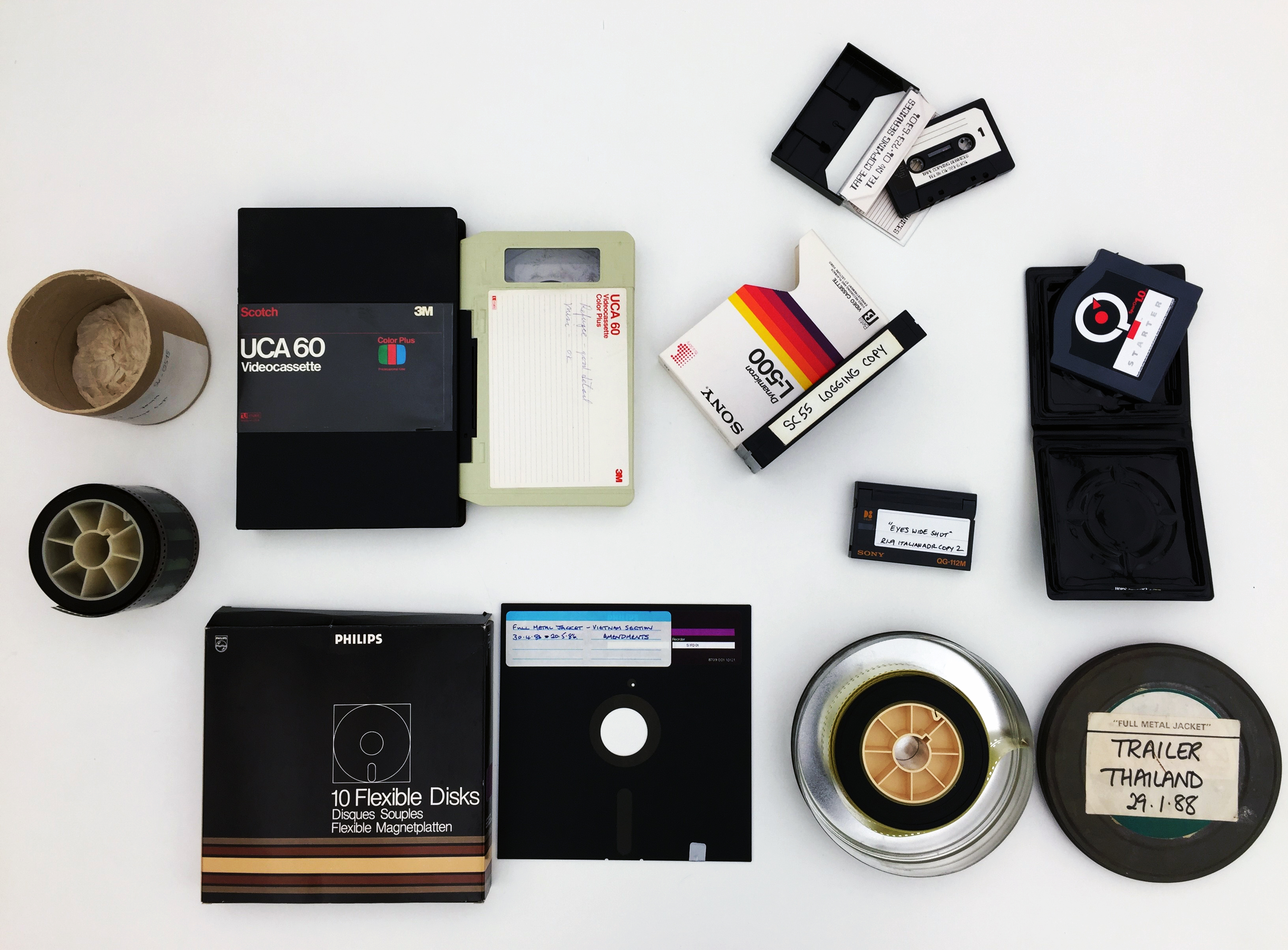
Collections staff involved in UAL’s Digital Archives and Collections Project had a day out of the archive in March to visit the Bodleian Libraries and discuss digital preservation.
In December last year the University Archives and Special Collections Centre hosted a visit from the Graduate Trainee Digital Archivists at the Bodleian Libraries. Last month, some of the staff involved in the UAL Digital Archives and Collections Project went to Oxford and returned the visit.
Our visit took us to their Bodleian Electronic Archives and Manuscripts (BEAM) service at the Weston Library. Providing us with an opportunity to learn more about their processes and practices for capturing born digital1 archives and manuscripts, which often includes digital materials found within the personal archives they are collecting.
In recent years the Bodleian has been receiving more and more born digital material. In a variety of forms, including whole desktop computers! Like the Bodleian, as well as caring for and providing access to our physical materials, UAL holds an increasing number of collections containing digital materials. These are either digitised from physical objects, or objects which are born digitally. Ensuring continued access to these digital materials presents us with technical challenges, such as obsolescence and file corruption.
On our arrival, Senior Archivist Matthew introduced us to their digital preservation work, before trainees Kelly, Miten, Ben and Alice demonstrated for us a number of the digital tools in use at BEAM.

First up, trainee Kelly gave us a demonstration of the digital forensics tools used to create a disk image from a CD. A disk image is a copy of the entire contents of a storage device, representing the content exactly as it is on the original storage device, including both data and structure information2.
We also heard about their web archiving work, as well as their role as a legal deposit library, contributing to the UK Web Archive. Preserving the web, or ‘web archiving’, refers to the practice of taking a copy of a website, or of particular content published on the web, to act as a record3.
Ben gave us an insight into the work of the Bodleian Web Archive. The Bodleian Libraries collects websites in an effort to preserve this material for future generations. Making use of the Archive-It service, which uses crawlers to collect copies of the files that compose the websites.

As well as collecting their own websites, the Bodleian Libraries are part of a partnership of UK Legal Deposit Libraries collecting UK websites. Alice showed us how they contribute to the UK Web Archive, collecting groups of websites brought together by particular topics and themes. Their current collecting areas include: online enthusiasts, mental health online, and gender equality.
Finally Miten showed us the role of metadata entry when undertaking cassette tape digitisation. Older formats like cassette tapes become obsolete when they are no longer produced or supported by manufacturers or they become incompatible with our available hardware. For example today most new computers do not have CD/DVD drives.

This was also a chance for us to learn about their successful Graduate Trainee Digital Archivist programme. Of great interest to us at UAL, as from October 2019 we will be hosting a Bridging the Digital Gap technical traineeship.
A Heritage Lottery funded initiative, led by The UK National Archives, the Bridging the Digital Gap traineeship programme is designed to introduce people with technical backgrounds and those from under-represented groups to a career in archives. More information about the Bridging the Digital Gap technical traineeships in archives can be found on The National Archives website.
Digital preservation is an emerging field. As such, knowledge sharing is an important part of our work, and we are thankful for this opportunity to learn from each other. We ended the day with a cup of tea in a local bookshop, giving us a chance to reflect on the great work that the Bodleian is doing in this area.
1An item which has no equivalent in physical form, only every existing in a digital form
2https://libguides.bodleian.ox.ac.uk/digitalpreservation/glossary
3https://www.dpconline.org/docs/knowledge-base/1861-dp-note-10-preserving-the-web/file

